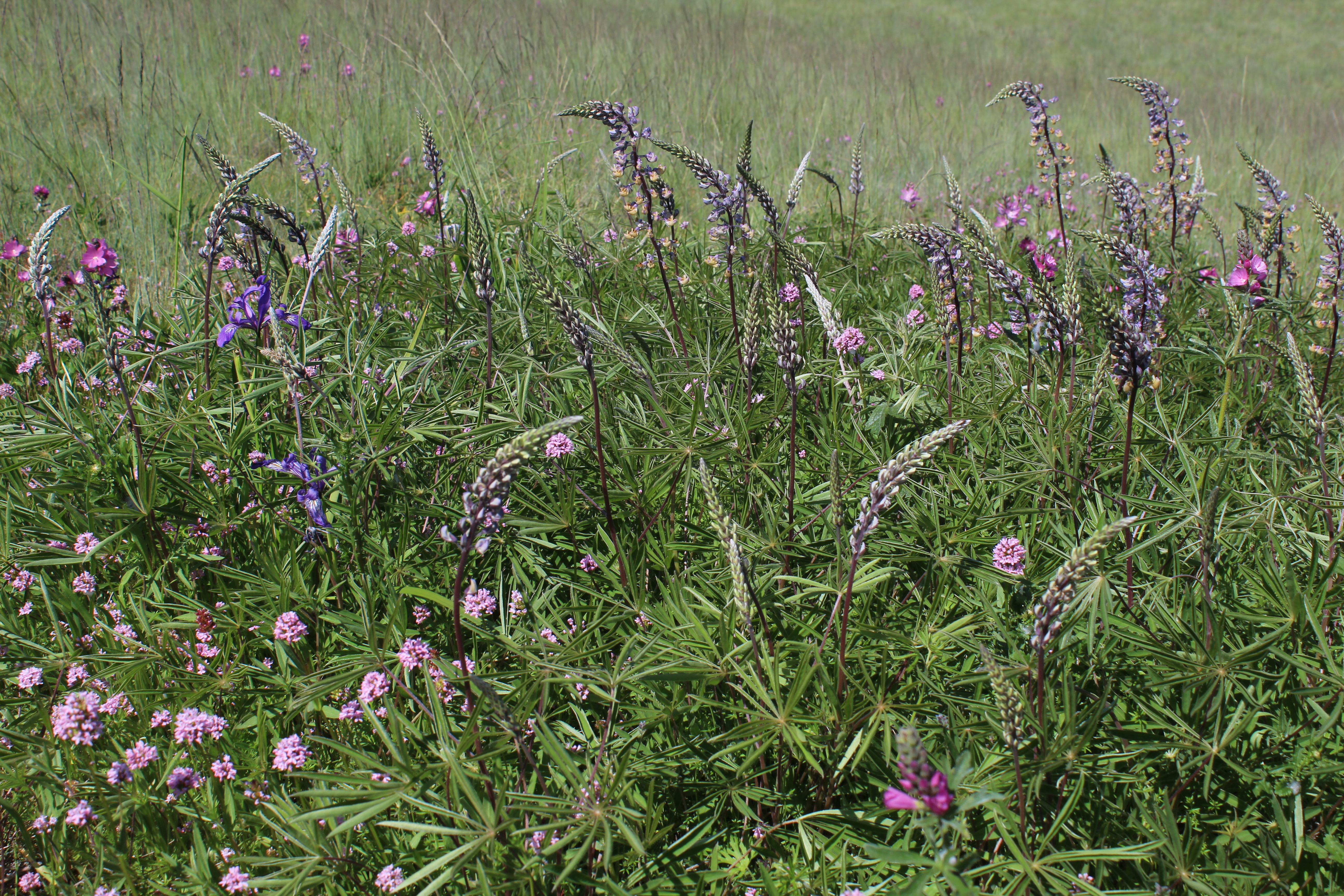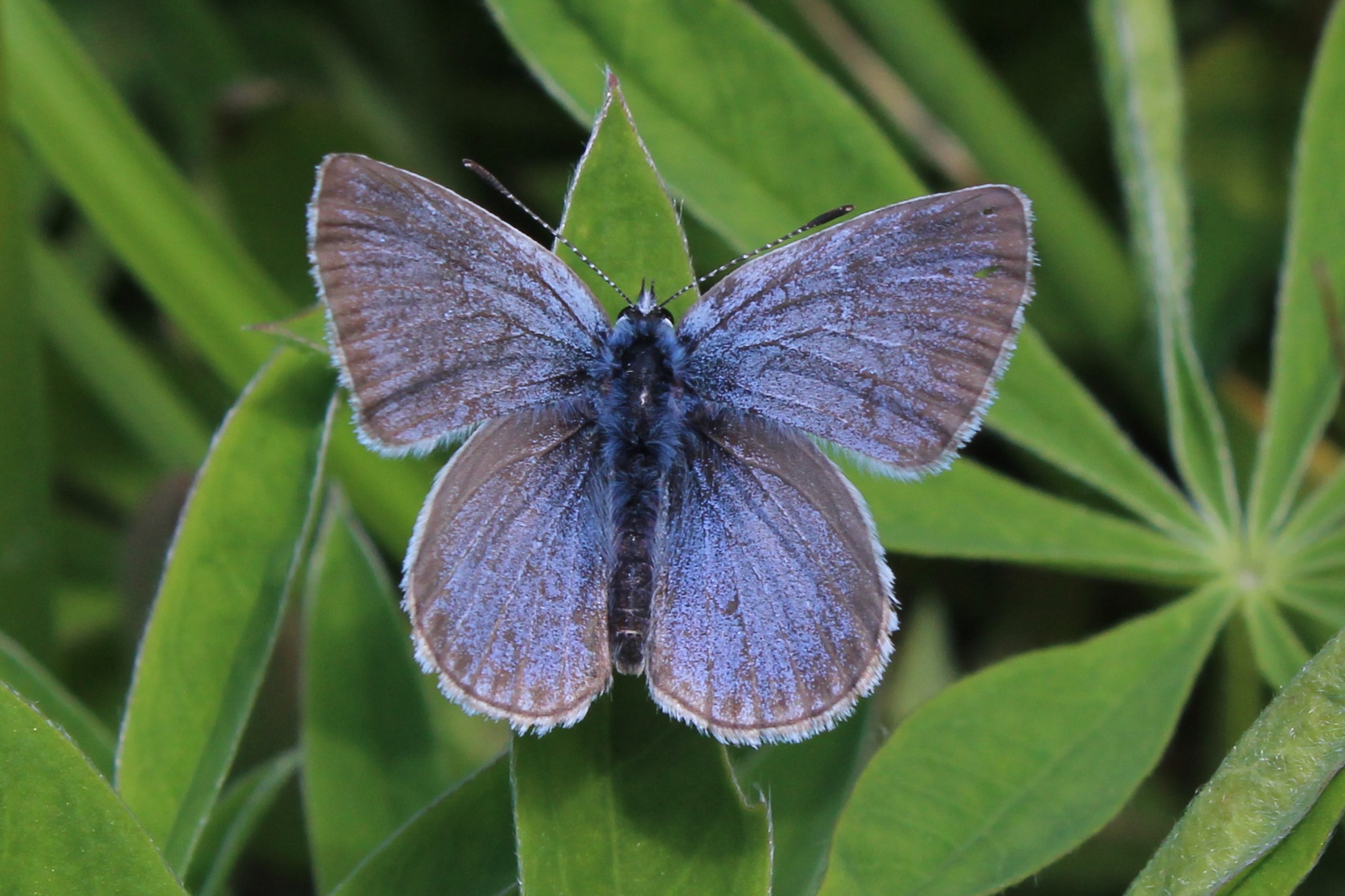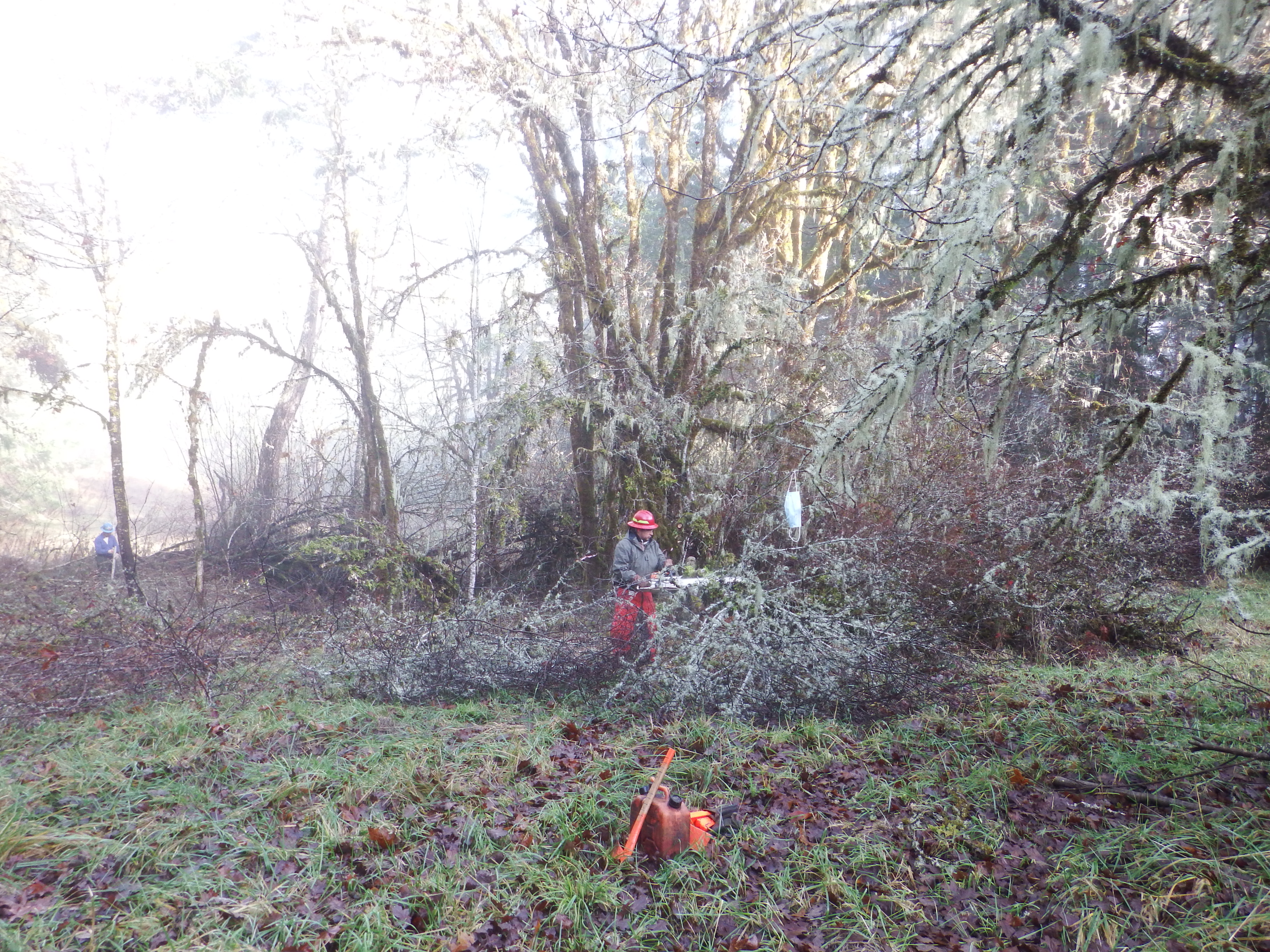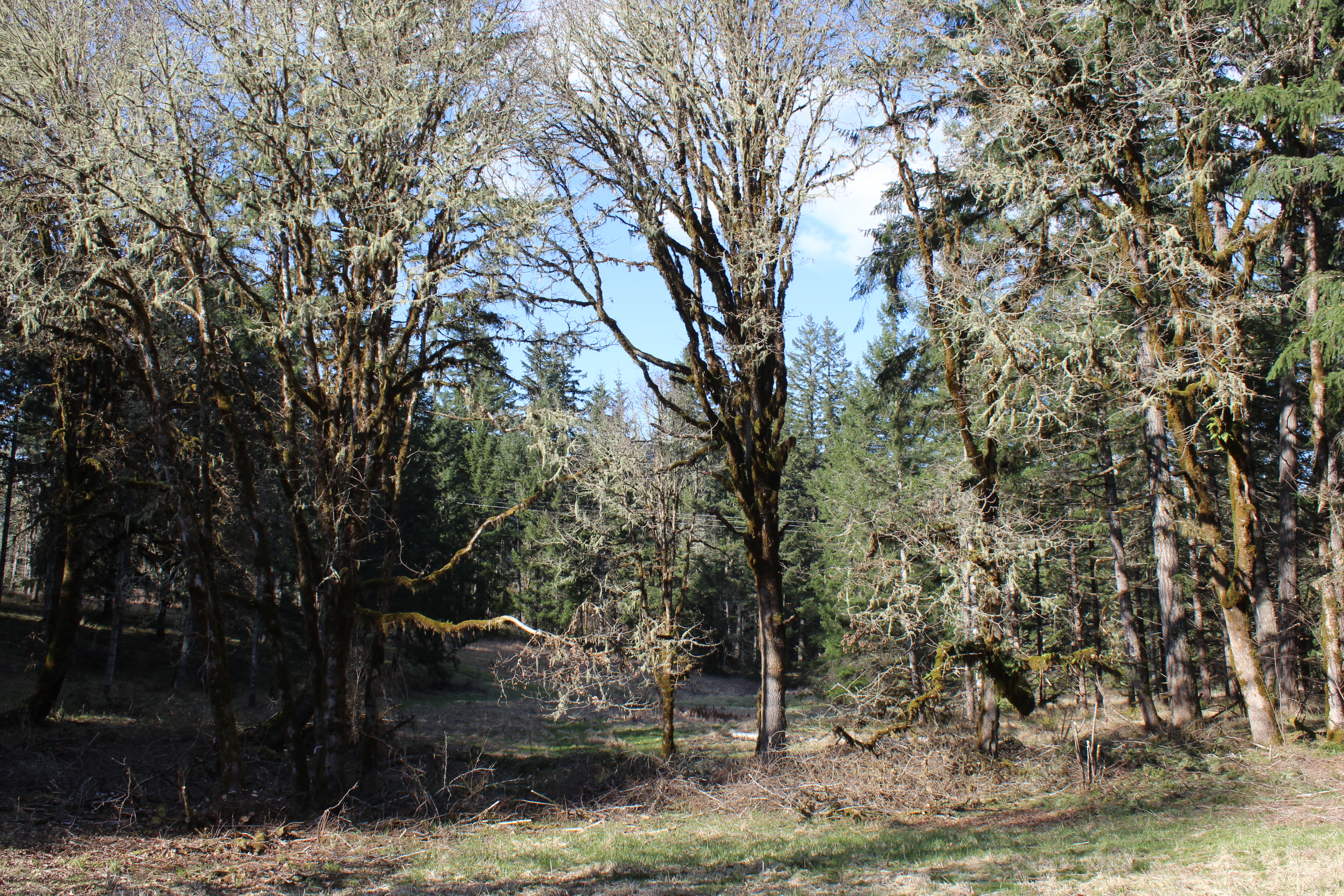
Build it and they will come: Fender’s blue butterfly seen this spring at Echo Hills Farm
By Peter Moore
August 2021
Kincaid’s lupine (Lupinus oreganus) is a threatened plant species, found primarily in the prairies of the Willamette Valley, Oregon, that has become rare due to the loss and degradation of prairie habitat in our region. Kincaid’s lupine is the primary host plant for the endangered Fender’s blue butterfly.
Fender’s blue butterfly (Icaricia icarioides fenderi) is also federally listed (endangered), and occurs only in the prairies and oak savannas of the Willamette Valley. Rediscovered in 1989, its existence was precarious, with a range-wide estimate of less than 4000 butterflies in 2000. Since then, dozens of land managers, private landowners and restoration practitioners have worked to restore Willamette Valley prairies, and efforts have paid off! In recent years, the estimates for the Fender’s blue butterfly population range from 14,000-29,000 individuals.
IAE is currently engaged in a project to increase populations of Kincaid’s lupine to benefit both the lupine and Fender’s blue butterfly. We are collaborating with several agencies and landowners at 11 sites in the western Willamette Valley, from Henry Hagg Lake in the north to Wren and Philomath in the south. Over three years we will help restore prairie habitat and introduce native diversity as well as plant seed and plugs of Kincaid’s lupine.
One of the project sites near Wren is Echo Hills Farm, where owners Karen Fleck-Harding and Tom Harding have been restoring their oak and savannah habitats over many years with a lot of hard toil and help from grants and collaborators. Although there is a small remnant population of Kincaid’s lupine on the property, as well as a scattering of small Kincaid’s lupine introduction plots in several meadows, a lot of the prairie habitat is dominated by invasive grasses such as tall fescue and tall oatgrass. The meadows were also surrounded by tall trees, such as Douglas-fir, creating a barrier for Fender’s blue butterfly movement.
As part of the project planning process, partners met on site to develop a plan for improving prairie habitat at Echo Hills Farm. Jared Jebousek of U.S. Fish and Wildlife Service’s (USFWS) Partners for Fish and Wildlife Program suggested that while we are improving the habitat, we could also open up a connection between one of the Echo Hills Farm meadows and the adjacent power line corridor, thus providing a link to other Fender’s populations in the Wren area.
Good idea, I thought - maybe butterflies would use this pathway someday in the future after we had restored the prairie habitat.
Little did I know, we wouldn’t have to wait very long.
In fall 2020 and spring 2021, through the combined efforts of USFWS, IAE, Karen and Tom and an AmeriCorps NCCC crew, we started a new phase of restoration at Echo Hills Farm. This included mowing, removing several Douglas-fir trees and scrub from the opening at one end of a meadow, thinning Douglas-fir trees around the perimeter to release oaks from competition and provide more light to the meadow, moving slash and logs, and conducting grass-specific herbicide treatments to knock back the pasture grasses. We also broadcast seed of native forbs and Roemer’s fescue.
On May 14, 2021, Karen and I were standing and admiring the progress when a butterfly fluttered past us.
“Oh look! Is that a Fender’s blue?” Karen asked. Sure enough, it was a Fender’s blue butterfly, and I could see at least two others flitting amongst the Kincaid’s lupine and other flowering native plants that were nearby. One female butterfly even flew towards the new opening with the power line corridor.
This apparently was the first record of the Fender’s blue butterfly at Echo Hills Farm.
Normally it takes several years to see the fruits of our restoration labors, so this was almost like instant gratification! And once again, this proves the old adage, “Build it and they will come.”
Many thanks to Oregon Watershed Enhancement Board for funding this project, Karen Fleck-Harding and Tom Harding for their amazing land stewardship, Jarod Jebousek and other USFWS staff, AmeriCorps NCCC and my other IAE colleagues who helped in the field.
Restoration
Research
Education
Get Involved
Contact
Main Office:
4950 SW Hout Street
Corvallis, OR 97333-9598
541-753-3099
info@appliedeco.org
Southwest Office:
1202 Parkway Dr. Suite B
Santa Fe, NM 87507
(505) 490-4910
swprogram@appliedeco.org
© 2025 Institute for Applied Ecology | Privacy Policy










